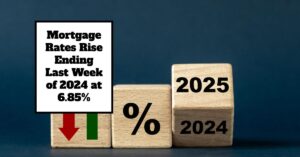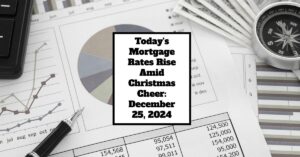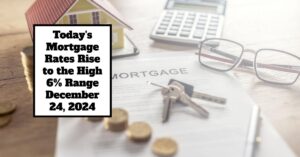Chico, California, while not quite as widely known as some other housing markets in the state, offers a unique and interesting option for potential homebuyers. Unlike some pricier California cities, Chico boasts a more moderate cost of living, while still attracting residents with its growing job market and vibrant community.
If you're thinking about buying or selling a home in Chico, CA, you're probably wondering what's going on with the market. Well, let me break it down for you: the Chico housing market is currently very competitive, with homes selling relatively quickly and prices having increased year-over-year. It's a dynamic situation, so let's dive into the details to give you the full picture.
I've been watching the real estate scene for a while now, and I know how confusing it can be to keep up with all the changes. So, I've done my homework, looked at the numbers, and I'm here to explain what's really happening with the Chico housing market, in a way that makes sense. We'll talk about how quickly homes are selling, how much they're going for, and whether it's a good time to buy or sell. Let's get started!
Current Chico Housing Market Trends: What's Happening Right Now?
Home Sales in Chico
One of the first things people look at is how many homes are actually selling. According to Redfin, in November 2024, there were 59 homes sold in Chico. That's up a bit, 1.7% more than the 58 homes sold in November of last year. A slight increase isn't a wild surge, but it does tell us that people are still actively buying and selling in the area.
It's important to remember that the number of sales can fluctuate depending on the time of year. We're just coming off the holidays so we may see some changes in the next few months.
Home Prices in Chico
Alright, let's talk about the big one: how much are homes going for? As of November 2024, the median sale price of a home in Chico is $440,000. That's a notable 3.8% increase compared to last year at the same time. We're also seeing a significant jump in the median price per square foot, up to $302, a 17.1% rise since last year. This jump in price per square foot suggests that the homes being sold now are likely more expensive than before, or that homes in desirable areas are fetching higher prices. This means if you bought a home in Chico a year ago, it's likely worth more now!
Here’s a quick summary in a table:
| Metric | November 2024 | Year-over-Year Change |
|---|---|---|
| Median Sale Price | $440,000 | +3.8% |
| Median Price per Square Foot | $302 | +17.1% |
| Homes Sold | 59 | +1.7% |
Housing Supply in Chico
Now, let’s talk about how long homes are staying on the market. This can give us clues about demand and supply. In Chico, the median days on the market is 30 days. This is slightly down from 32 days last year, suggesting that homes are selling a bit quicker right now compared to the same time last year. That may seem like a small difference, but it’s another indicator of how competitive the market currently is.
The “days on market” statistic is a real key to seeing the real-time movement of the Chico market. When this number goes down, it means that buyers are snapping up homes faster.
Chico Market Trends: A Closer Look
So, what do all these numbers mean when you put them together? Let's break down the bigger trends in the Chico housing market.
- Competitive Market: The Chico market is definitely competitive. Many homes are receiving multiple offers, and some buyers are even waiving contingencies (which are conditions that need to be met before the sale can go through).
- Homes Selling Quickly: Homes are selling relatively quickly, often for around their list price. However, some popular listings are even going for above the asking price. This is a strong sign of high demand.
- Sale-to-List Price Ratio: On average, homes in Chico are selling for about 99% of their list price. This shows homes are selling close to their listed values and it could be because people are eager to buy.
- Homes Sold Above List: About 35.6% of homes are selling above their list price, which is a slight increase from last year, pointing to a hot market where bidding wars can happen. This indicates that the demand is higher in certain areas or for particular properties.
- Price Drops: Interestingly, the percentage of homes with price drops is down at 22.1%, compared to last year, which is a good sign that houses are being priced and sold effectively.
Is It a Buyer's or Seller's Housing Market in Chico?
Okay, this is the question everyone wants the answer to. Based on the data I've looked at, it’s clear that Chico is currently in a seller's market. What does that mean? Well, in a seller's market, there are more buyers than there are homes for sale. This puts sellers in a great position, as they have a better chance of selling quickly and often at a higher price. Here's why it's currently a seller's market:
- Low Inventory: While the data doesn't specifically show inventory numbers, the fact that homes are selling fast with a lot of competition suggests there aren’t many houses on the market, which gives sellers the upper hand.
- Strong Demand: There's a clear demand for homes in Chico, evidenced by the number of homes getting multiple offers, and selling above list price.
- Price Appreciation: The fact that home prices have increased by almost 4% in the last year clearly points towards seller's market conditions.
As a person who has seen several market cycles come and go, I can confidently say that the scales are currently tipped in favor of sellers. If you’re thinking of selling your home, now may be a very good time to do it. If you are thinking about buying in Chico, you'll need to be prepared for competition and the possibility of paying a bit over asking price.
Are Home Prices Dropping in Chico?
This is another common question I get, and the answer right now is a resounding no. According to the data, the median home price in Chico has increased, not dropped, year over year. In November 2024, it is up by 3.8%. While nobody can see the future, based on the trends I'm seeing, I don't expect a drop in prices any time soon, not without some other big changes to the overall economic situation.
While some individual homes may experience price drops, this does not signify a general downward trend across the Chico real estate market. Keep an eye on the trends and I will keep my eyes on the numbers for you!
Migration Patterns: Where Are People Moving To and From?
Another factor that affects housing markets is where people are moving to and from. In Chico, here's what's been happening:
- Out of Chico: From September 2024 to November 2024, about 64% of Chico homebuyers were searching to move out of Chico while about 36% looked to stay within the area. The top places where people are leaving to are Sacramento, San Diego, and Dallas.
- Into Chico: Over the same period, 0.10% of homebuyers across the nation were looking to move to Chico from other cities. The places where most people were moving from were San Francisco, Los Angeles, and Seattle.
These migration trends are good to note, as they can affect both the demand for housing and the types of properties that buyers are looking for. It shows that Chico is drawing from some major metropolitan areas.
Here is a table showing the inflow and outflow of people based on cities:
| Inflow Cities to Chico | Net Inflow | Outflow Cities from Chico | Net Outflow |
|---|---|---|---|
| San Francisco, CA | 209 | Sacramento, CA | 83 |
| Los Angeles, CA | 74 | San Diego, CA | 10 |
| Seattle, WA | 49 | Dallas, TX | 8 |
| Redding, CA | 36 | Medford, OR | 7 |
| Salinas, CA | 11 | Reno, NV | 6 |
| Phoenix, AZ | 5 | San Luis Obispo, CA | 6 |
| Portland, OR | 3 | Boise, ID | 6 |
| Rochester, NY | 2 | Orlando, FL | 5 |
| Bakersfield, CA | 2 | Bend, OR | 4 |
| Kansas City, MO | 1 | Albuquerque, NM | 4 |
Other Factors to Consider
There are other factors that also affect the housing market in Chico. These include:
- Climate Risks: Chico has some climate risks, such as floods, fires, and heat. It is worth noting that 99% of properties are at risk from wildfires and severe heat, and 62% of properties are at risk of flooding over the next 30 years.
- Schools: The quality of schools in a neighborhood has a big impact on home values. Areas with highly-rated schools tend to see more demand. Some of the top-rated schools in Chico include Sierra View Elementary School and Neal Dow Elementary School.
- Transportation: Chico is a relatively car-dependent city, as its Walk Score is 49/100. However, its Bike Score is 69/100, indicating it is relatively bike-friendly.
- Local Economy: The health of the local economy impacts employment and people's ability to buy homes. I will keep watching to see if there are any changes to the economy.
My Thoughts on the Chico Housing Market
Okay, so here’s my take on all of this. I have observed that the Chico housing market is quite dynamic right now. It is competitive, with high demand, and rising prices. For sellers, this is an opportune time to list their properties. For buyers, it means a competitive environment where they need to be prepared to make strong offers.
I've been doing this for a while now and I can say that while the numbers paint a picture, it’s important to understand what’s happening behind those numbers. The Chico area is a desirable place to live, and people see value in that, which is why we're seeing such a hot market.
Whether you are buying or selling, my best advice is to do your homework, talk to local experts, and be ready to move fast when the right opportunity comes along. The market may change in the future, so staying informed is really important.
Chico Housing Market Forecast 2025-2026
Many people, including myself, are wondering what the future holds for home prices in our area. The short answer, based on recent forecasts, is that we might see a slight dip in prices over the next year, but don't expect a crash. Let's dive into the details and figure out what's really going on.
What to Expect in the Coming Months
Zillow, a pretty well-known name in real estate, has provided some interesting insights into the Chico real estate market. According to their latest data, they're predicting a slight decrease in home values over the next year or so. Here's a breakdown of what they expect:
| Time Period | Projected Change in Home Value |
|---|---|
| December 2024 | 0.1% Increase |
| February 2025 | -0.3% Decrease |
| November 2025 | -2.1% Decrease |
Okay, so these numbers may seem small, but they can definitely impact your decision if you're thinking of buying or selling. What this basically says is that the Chico housing market might see a mild slowdown, with prices potentially decreasing by a little more than 2% by late 2025.
This is not a crash by any means but something to keep in mind when making your decisions. It's worth noting that these are just forecasts, and the actual market can change depending on many different things, like interest rates, and how many homes are on the market, and even the general economy.
How Does Chico Compare to Other California Markets?
Now, let's see how our little corner of California stacks up against other areas in the state. Zillow also provided forecasts for various other cities, and here’s how Chico compares:
| City/Region | Projected Change by December 2024 | Projected Change by February 2025 | Projected Change by November 2025 |
|---|---|---|---|
| Chico, CA | 0.1% | -0.3% | -2.1% |
| Santa Maria, CA | -0.1% | -0.1% | 3% |
| Salinas, CA | 0% | 0.1% | 1.4% |
| San Luis Obispo, CA | 0.1% | 0.1% | 1.4% |
| Merced, CA | 0.1% | 0.1% | 1.3% |
| Santa Cruz, CA | -0.3% | -0.7% | 0% |
| Redding, CA | 0.1% | 0.2% | 0.2% |
| El Centro, CA | 0.4% | 0.7% | 1.8% |
| Yuba City, CA | 0.1% | 0.2% | 1.1% |
| Madera, CA | 0.3% | 0.5% | 2.1% |
Looking at this data, you can see that Chico's housing forecast is a bit more cautious compared to some other California cities. While some places are expected to see growth, Chico's market is predicted to cool down a bit. It seems we might be in for a slightly different experience than our neighbors. It's all just part of the ups and downs of the real estate world. I’ve seen different markets behave in different ways during my time following these trends.
Will Home Prices Crash in Chico?
The big question on everyone's mind is, “Will there be a crash?” Based on my understanding and the data from Zillow, a crash is highly unlikely. We're seeing a projected slight correction, or slowdown, not a freefall. The Chico housing market seems to be simply adjusting after a period of high growth. Factors like increasing interest rates are a big reason for this slowdown, making it a bit tougher for people to buy.
My Thoughts and a Glimpse into 2026
Based on these trends, I think we can expect a more balanced market in Chico over the next few years. I don't anticipate a dramatic crash, but rather a gradual correction. If I had to guess about 2026, I’d say we may see a stabilization of prices or even a slight rebound after the mild decreases predicted for 2025. Real estate is always full of surprises, but this is what makes sense to me given the current circumstances. My personal advice to you would be to stay informed, do your research, and consult with a real estate professional if you're considering buying or selling in Chico.
So, Should You Invest in the Chico Real Estate Market in 2025?
Investing in real estate is a significant decision that requires careful consideration of various factors, including market trends, economic stability, growth prospects, and lifestyle desirability. Chico, California, presents a compelling case for real estate investment due to several key reasons.
1. Strong Economic Foundations
Chico boasts a diverse economy, encompassing healthcare, education, agriculture, and technology sectors. The presence of California State University, Chico adds an academic dimension, attracting students and faculty, and potentially driving demand for rental properties. By the year 2030, it is estimated that Chico's economy will have expanded to produce over 20,000 new jobs.
2. Growing Population and Housing Demand
Chico has experienced a steady population growth in recent years, a trend expected to continue. According to the Butte County Association of Governments Growth Forecasts, Chico, California's population could increase by at least 16,409 and as many as 26,574 people by 2045.
The city's population has been growing steadily since 2000, with an annual growth rate of 2.97% from 2000 to 2010. The demand for housing is likely to rise, creating favorable conditions for property investment. A growing population often signifies a need for both residential and commercial real estate.
3. Chico: A University Town with Rental Potential
Chico's identity as a university town creates a potentially lucrative market for rental properties. Students and faculty often seek off-campus housing, presenting an opportunity for rental income. However, keep in mind that success in the rental market depends on various factors beyond just the presence of a university. Carefully research the Chico rental market, vacancy rates, and rental regulations before diving into rental property investment.
4. Affordable Housing Market
Chico's housing market stands out in California for offering relatively affordable options. This attracts a wider pool of buyers, potentially increasing demand and pushing property values upwards in the long run. However, it's important to note that “affordable” is relative, especially within the context of California's housing market.
5. Scenic Location and Quality of Life
Chico's charm extends beyond affordability. Nestled amidst stunning natural beauty, the city offers a plethora of outdoor activities, making it highly desirable for nature lovers and adventure enthusiasts. This focus on quality of life can be a major draw for families and individuals seeking an active and enriching lifestyle, potentially fueling real estate demand. It's important to note, however, that while Chico might be more affordable than some California areas, affordability is relative and overall housing costs may still be a consideration for some buyers.
6. Chico: A Market with Potential
While some data suggests potential growth in Chico's housing market, it's important to view this with caution. Recent forecasts for the next year actually predict a slight price correction. Chico's appeal as a place to live can't be denied, and a growing community could lead to future value increases.
However, relying solely on past performance or limited data points isn't the best approach for real estate investment decisions. It's crucial to consider the latest market trends, including the predicted cooling down period, alongside Chico's overall economic picture before making any investment decisions.










